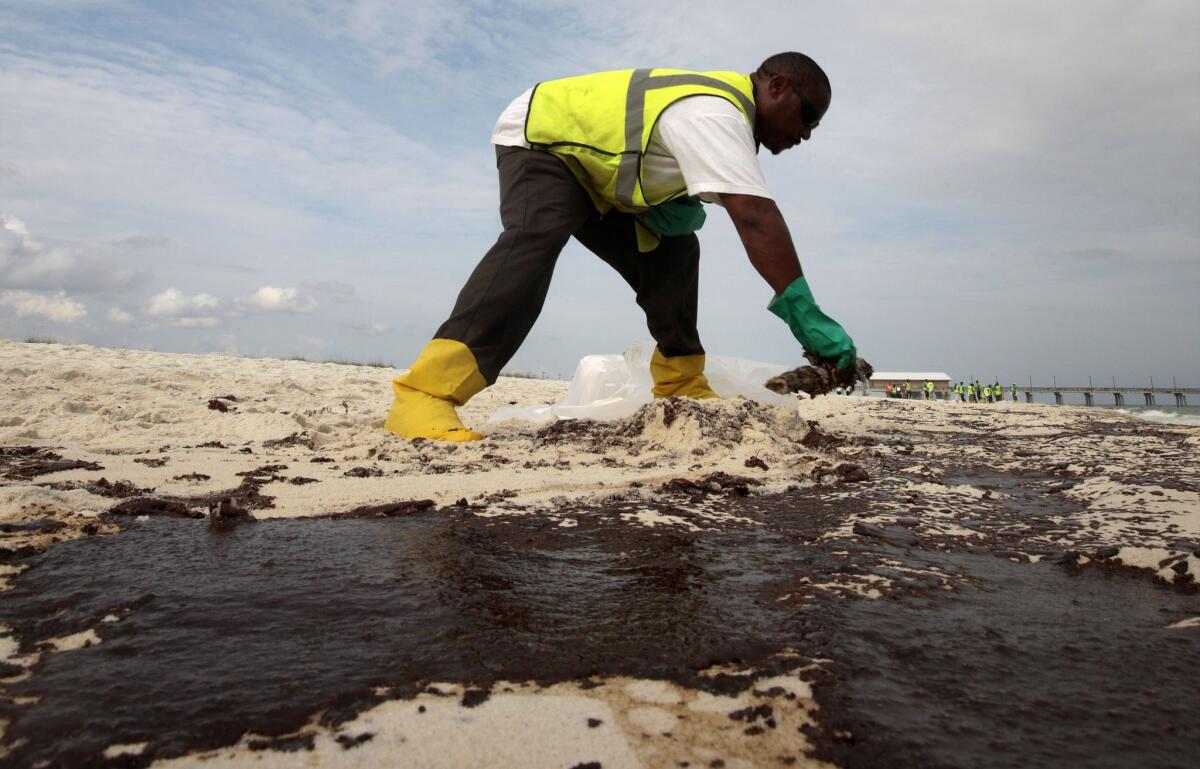BP oil spill altered soil microbes on gulf beach

Microbes in beach sand apparently gobbled up a lot of oil washed ashore from the 2010 BP oil spill, but that assault altered the microbial population, leaving it less functionally diverse, according to a new study.
Among the declines from the oil inundation was the ability to make nutrients such as nitrogen available to other life forms, according to Georgia Tech environmental microbiologist Konstantinidis Konstantinos, co-author of the study published online Tuesday in the ISME Journal.
“One of the key groups that we saw disappearing, from the oil, was these nitrogen fixers,” Konstantinos said. “That’s a concern because it supports the rest of the system.”
How much that functional decline might affect shore life was not analyzed by the study, which also found that oil was barely detectable in soil samples at Pensacola municipal beach a year after the spill.
“One year later, we see very little oil – a lot was apparently degraded by the microbes that live in the beach sand,” said Konstantinos. “The microbes in the beach sand seem to do a good job, biodegrading and removing the oil.”
Researchers compared genomic data from sand sampled in May 2010, shortly before the oil arrived on the Florida panhandle, with that of samples taken in July and October, and in June 2011.
As expected, microbes that can feed off hydrocarbons and fight off oil-related toxins flourished immediately, while others declined. But that trend eventually shifted back toward the relative abundances that had been present before the spill, the study found.
Overall, the oil did not “select” for narrowly niched species - it instead favored broader generalists, according to the study.
“It seems to be the case that the generalists, those that can carry out many different functions, are better equipped to deal with oil spills, compared to some specialists, which is what some people would think,” Konstantinos said.
The researchers hope their data could lead to ways to assess the stage of oil breakdown in soils, based on the relative abundances of various microbes.
The study was partly funded by a grant from BP, which was drilling at its Macondo prospect off the Louisiana coast in April 2010, when the Deepwater Horizon rig, leased from Transocean, exploded. Eleven workers were killed, and the ensuing leak sent an estimated 4.9 million barrels of oil into the Gulf of Mexico, the worst offshore oil spill in U.S. history.
How much oil eventually reached shores is largely unknown, and complicated by the fact that storms buried some of it in sediments.
About 2 million barrels are believed to have been trapped in deep ocean waters, and a recent study suggests that as much as 31% of it likely settled into bottom sediments. A 2012 study of shore sediments on the Alabama coast found dramatic changes in the microbial population five months after the spill, and suggested that buried oil may be to blame.
Drill deeper into science. Follow me on Twitter: @LATsciguy







